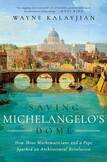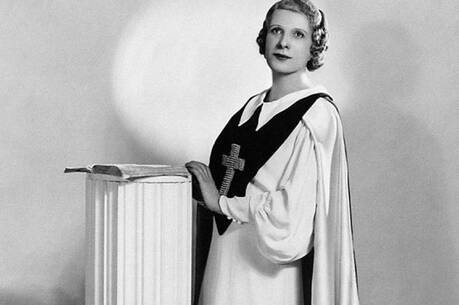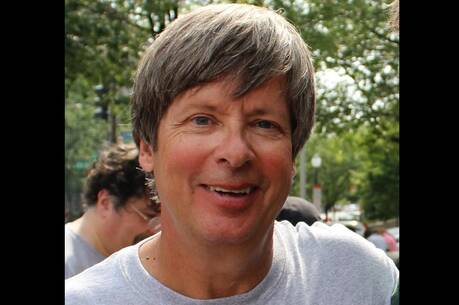Review: How to fix the dome of St. Peter’s?
Wayne Kalayjian’s Saving Michelangelo’s Dome begins with the election of Cardinal Prospero Lorenzo Lambertini to the papacy in 1740. He becomes Pope Benedict XIV after a six-month conclave, one of the longest ever. He is a charming figure: someone who never wanted to be pope, who liked hot chocolate for breakfast and who helped women become university professors at a time when that was extraordinarily controversial. He also had a problem: The dome of St. Peter’s was cracking.
St. Peter’s Basilica is one of the most recognizable churches in the world, a destination of spiritual pilgrimage and the symbol of the power and authority of the Roman Catholic Church. In his debut book, Kalayjian explains both the complicated physics behind dome construction and the human drama that made building and fixing the dome of St. Peter’s a tangled affair. He also argues that this was the first modern engineering project: the end of construction based on intuition and tradition and the beginning of construction based on mathematics.
When I heard the author speak about his book, he said he thought the fact that Benedict XIV was the pope during the dome’s repair was an act of providence. A number of frail, indecisive or otherwise ineffectual 18th-century popes may have not been able to fix the dome in a timely and successful manner. Luckily, Benedict XIV was the right man for the job.
A major takeaway from this book is that it is a miracle any pre-modern church is still standing. Another is that every majestic basilica and cathedral took a really long time to build, was insanely expensive and needs constant maintenance.
Saving Michelangelo’s Dome provides a brief summary of the history of Vatican Hill and Constantine’s initial basilica on that spot, and then dives into the construction of the present one. There is broody Michelangelo, who is constantly changing his design for the dome. There are his rivals in the Roman architectural scene, a world that the reader quickly learns was one of immense feuding. And there are popes, including Sixtus V, who managed to construct the dome in only 22 months, in contrast to the 16 years it took for the construction of the dome of the cathedral in Florence.
Kalayjian is a structural engineer, not a church historian, which gives him the expertise to talk about the many physical forces at work on a dome and what causes it to start cracking. While he explains it as simply as possible, it can still be rough going for those of us with little background knowledge. But there are two things he makes clear: Domes are hard to build, and pre-modern architects knew very little about how they worked beyond doing what previous architects had done.
This is the thread that weaves throughout the book. The chief architectural textbook of the Renaissance was written before the birth of Christ. There were other churches that actually did collapse, because so much of construction was based on rules of thumb and hope.
But the world had changed since St. Peter’s was built, and its cracks became too large to ignore in the 1740s, a world where suddenly mathematics was much more important. The subtitle of the book is How Three Mathematicians and a Pope Sparked an Architectural Revolution. Those three mathematicians were one Jesuit, Roger Boscovich, and two Minim friars, François Jacquier and Thomas Le Seur. They were all leading members of the Roman academic establishment. They did not, however, know anything about construction. But Pope Benedict XIV thought highly of them and this new world of science, and so he asked for their ideas on how to fix the dome.
It caused an uproar. The world of Roman building and design was already insular, with even architects from Florence like Michelangelo viewed with suspicion. Here were a Croatian and two Frenchmen who had never held a compass telling the leading architects that everything they knew about how to do architecture was wrong. They were quickly removed from the project.
Kalayjian’s argument, however, is that their ideas couldn’t be removed. The final plan for fixing the dome was drawn up by another mathematician, the Italian Giovanni Poleni of the University of Padua. Poleni was suspicious of new ideas coming from books like Isaac Newton’s Principia, but his plan bore a noticeable resemblance to the one illustrated by Boscovich, Jacquier and Le Seur that Poleni had criticized. The dome was saved.
The book’s stance that the opinion of the three had a direct influence on the development of modern engineering can feel a little spurious. There is, in fact, too much here on the development of engineering and praise for the engineering profession. It makes the book feel untidy, especially with the part in the middle that focuses on two British architects.
There is also much about the drama of the Roman architectural establishment, and not very much about the politics of the church outside of the initial chapter talking about the conclave. The Papal States’ shaky existence and its conflicts with neighboring secular countries is also alluded to but not discussed in depth. This is an architectural history book that happens to be about a religious building, and not a book about church history.
It is, however, a fascinating book that gives the reader a much better appreciation for the challenges of church construction.
One particularly novel section focuses on the builder Nicola Zabaglia, who devised a new system of scaffolding. He put out a book about how he did it, but he had to dictate the text: He was illiterate. This section is one where an “architectural history book that happens to be about a religious building” is a strength. The author’s joy and excitement in scaffolding is evident, and it also appears in his praise for the neatly done construction staging. The work of the laborer is not left out in favor of solely focusing on the educated professionals, and it is also noted how dangerous this work was.
In the medieval and early modern eras, generations of workers would labor on the same church. We 21st-century Americans live in cities where we see elaborate 19th-century Gothic Revival churches that have seemingly always been part of our city’s memory. But then when we visit Europe, we see churches that feel even more timeless.
Many newly built churches that imitate traditional styles do so only at the level of veneer. Well-done traditional architecture requires a lot of labor, a lot of money and a lot of time. A rushed job, like the initial construction of St. Peter’s dome, will lead to problems later.
As Kalayjian emphasizes, to build a grand and lasting church requires intensive and difficult work. Maintaining them is perhaps even more difficult—but it is worth it.
And if you are ever in St. Peter’s Basilica, look up at the dome and remember that someone once had to carry a whole lot of heavy iron chains up to the top so it wouldn’t fall on your head.
This article also appeared in print, under the headline “Built to Last?,” in the November 2024, issue.










